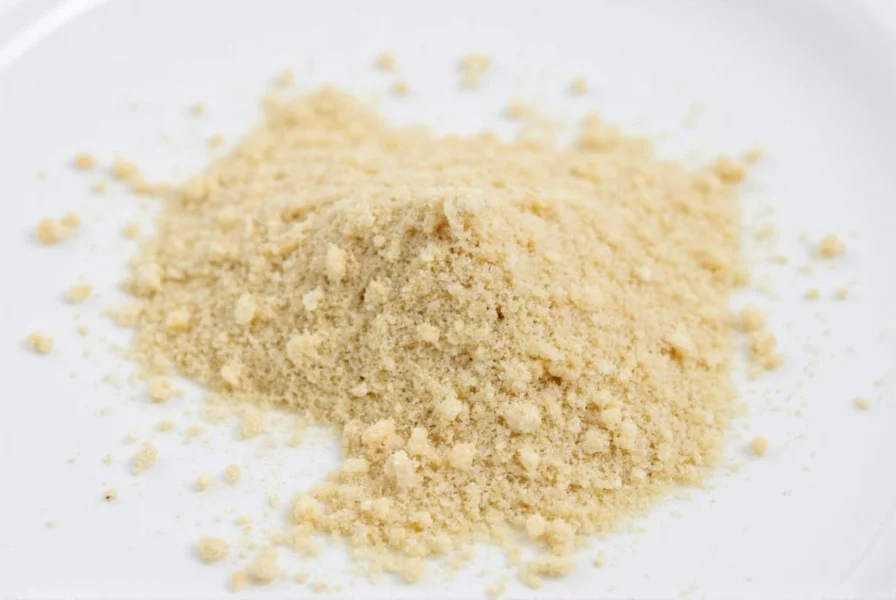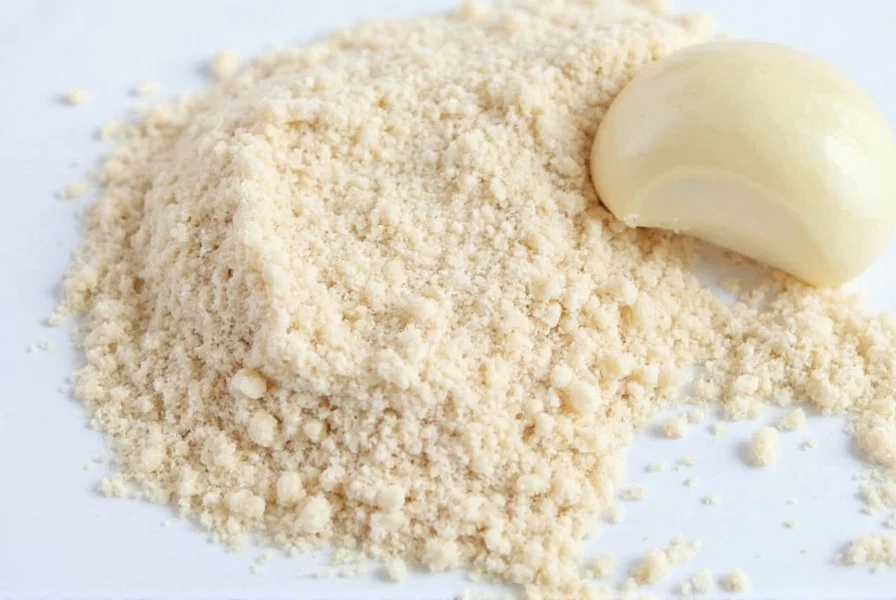The standard conversion is 1/8 teaspoon of garlic powder equals one fresh garlic clove. This ratio accounts for the concentrated flavor of dried garlic compared to its fresh counterpart.
When substituting garlic powder for fresh garlic in recipes, understanding the precise conversion ratio is essential for achieving balanced flavors. Many home cooks and professional chefs face this common kitchen dilemma when fresh garlic isn't available or when convenience dictates using the powdered form.
Why Garlic Powder Requires Different Measurements
Garlic powder undergoes a dehydration process that removes moisture while concentrating the flavor compounds. This concentration means you need significantly less powdered garlic to achieve similar flavor intensity as fresh cloves. The drying process intensifies certain sulfur compounds responsible for garlic's distinctive taste and aroma.
Using too much garlic powder can result in an overpowering, bitter flavor that dominates your dish. Conversely, using too little might leave your recipe lacking that essential garlic character. Getting this conversion right makes the difference between a perfectly seasoned dish and one that misses the mark.
Garlic Powder to Fresh Garlic Conversion Chart
| Fresh Garlic | Garlic Powder Equivalent | Best For |
|---|---|---|
| 1 clove | 1/8 teaspoon | Sauces, dressings, marinades |
| 2 cloves | 1/4 teaspoon | Stews, soups, casseroles |
| 3 cloves | 3/8 teaspoon | Roasted vegetables, meat rubs |
| 4 cloves | 1/2 teaspoon | Pasta sauces, pizza toppings |
| 6 cloves | 3/4 teaspoon | Large batch cooking, meal prep |
| 8 cloves | 1 teaspoon | Commercial recipes, party dishes |
Factors That Affect Garlic Powder Conversion
While the 1/8 teaspoon per clove ratio serves as an excellent starting point, several variables can influence the ideal conversion for your specific recipe:
Garlic Powder Quality and Age
Freshly opened garlic powder delivers more potent flavor than older containers. Over time, the volatile compounds that give garlic its characteristic taste gradually dissipate. If your garlic powder has been sitting in your pantry for more than six months, you might need to increase the amount slightly to achieve the same flavor intensity.

Recipe Type Considerations
Different cooking methods affect how garlic flavor develops:
- Dry rubs and spice blends: Use the standard conversion ratio as the powder integrates directly with other dry ingredients
- Wet ingredients (sauces, soups): Consider using 10-15% less powder as moisture helps distribute flavor more evenly
- Baking applications: Garlic powder works better than fresh in baked goods due to consistent distribution
Brand Variations
Not all garlic powders are created equal. Some brands process their garlic differently, resulting in varying flavor concentrations. Premium organic brands often deliver more intense flavor than generic supermarket varieties. When trying a new brand, start with the standard ratio and adjust to taste in future preparations.
Pro Tips for Perfect Garlic Substitution
Professional chefs recommend these techniques when substituting garlic powder for fresh cloves:
- Bloom the powder: Mix garlic powder with a small amount of warm oil or water before adding to your recipe. This rehydrates the powder and releases more flavor compounds.
- Add early for milder flavor: Incorporating garlic powder at the beginning of cooking creates a more mellow, integrated flavor.
- Add late for stronger punch: Stirring in garlic powder during the last few minutes of cooking preserves more of its sharp, pungent character.
- Adjust for salt content: Many garlic powders contain anti-caking agents that include salt. Account for this when seasoning your dish.
When Fresh Garlic Works Better Than Powder
While garlic powder offers convenience, certain applications benefit from fresh garlic:
- Raw preparations like salad dressings and aioli
- Dishes where texture matters, such as garlic bread
- Recipes requiring roasted garlic's sweet, caramelized notes
- Situations where you want the visual appeal of minced garlic
For the most authentic garlic experience in these applications, nothing beats fresh cloves. However, when time or availability constraints make fresh garlic impractical, knowing the proper garlic powder conversion ratio ensures your dishes still deliver that essential garlic flavor.

Common Substitution Mistakes to Avoid
Many cooks make these errors when substituting garlic powder for fresh cloves:
- Using equal measurements - Assuming 1 clove equals 1 teaspoon of powder creates overpowering results
- Not accounting for recipe moisture - Using the same amount in wet versus dry recipes without adjustment
- Adding too early in cooking - Burning garlic powder by adding it to hot oil before other ingredients
- Ignoring freshness factors - Not adjusting for older garlic powder that has lost potency
Frequently Asked Questions
Can I use garlic powder instead of fresh garlic in all recipes?
While garlic powder works in most cooked dishes, it's not ideal for raw applications like salad dressings or garlic bread where fresh garlic's texture and immediate pungency matter. For cooked recipes, garlic powder substitution works well when using the proper 1/8 teaspoon per clove ratio.
How do I adjust the garlic powder amount for stronger or milder flavor?
For milder garlic flavor, use 1/16 teaspoon per clove instead of 1/8 teaspoon. For stronger flavor, increase to 3/16 teaspoon per clove. Always add incrementally and taste as you cook, as garlic powder's flavor intensifies during cooking and cannot be removed once added.
Does the size of the garlic clove affect the conversion ratio?
Yes, standard conversion ratios assume medium-sized cloves (about 1 inch long and 3/4 inch in diameter). For extra-large cloves, use up to 1/6 teaspoon of powder. For small cloves, reduce to 1/10 teaspoon. When recipes specify "large" or "small" cloves, adjust accordingly while maintaining the concentration principle.
Can I substitute fresh garlic for garlic powder using the same ratio?
No, the conversion works in reverse. To replace garlic powder with fresh garlic, use 1 medium clove for every 1/8 teaspoon of powder called for in the recipe. Remember that fresh garlic contains moisture that affects recipe chemistry, so this substitution works best in cooked dishes rather than baked goods.
How should I store garlic powder to maintain its potency?
Store garlic powder in an airtight container away from heat, light, and moisture. Properly stored, it maintains optimal flavor for 6-12 months. Avoid storing above the stove or near other heat sources. Check potency by rubbing a small amount between your fingers—if you can't smell a strong garlic aroma, it's time to replace it.











 浙公网安备
33010002000092号
浙公网安备
33010002000092号 浙B2-20120091-4
浙B2-20120091-4